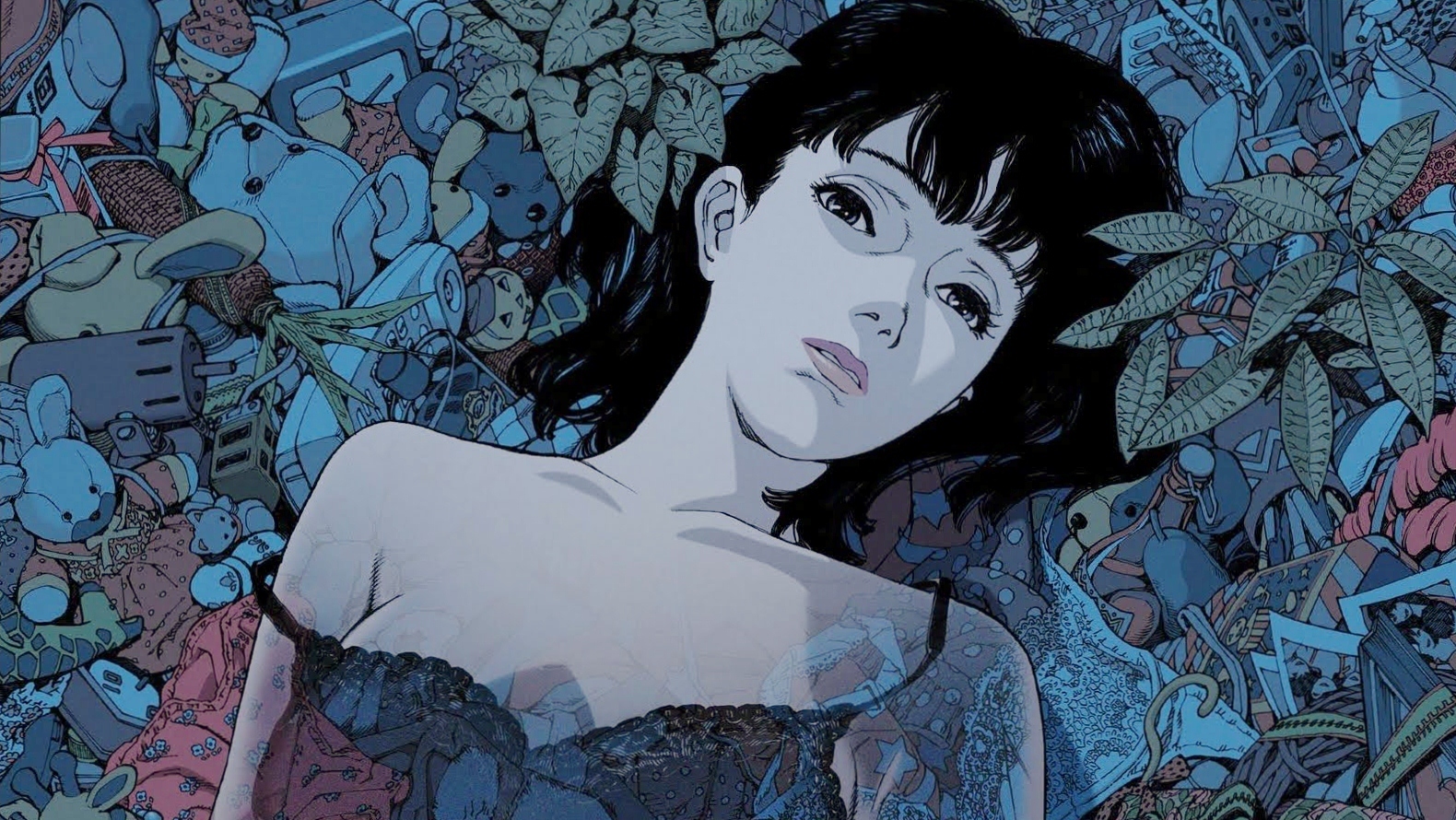
Perfect Blue
Written by Sadayuki Murai and Yoshikazu Takeuchi
Directed by Satoshi Kon
Japan, 1997
Teen-sensations-turned-adult-starlets crop up even more often these days, thanks in large part to teen-content-machines Disney and Nickelodeon. As a result, identity crisis has seemingly crept into these hard-working young women’s contracts as they’re forced to switch between singing and acting or Christian-audience innocence and sex appeal. There exists a third job for them: herding the public eye to become accepting of the new adult careers they’ve trailblazed for themselves. Though equally applied to today’s Ariana Grande, Miley Cyrus, or Lindsay Lohan, Perfect Blue investigated the horrors of this celebrity identity crisis, both personal and public, through a lens as chilling as Hitchcock’s, though as free as animation can allow.
Mima Kirigoe plays her last show as a part of pop group CHAM! to an insultingly small audience, announcing her leave to pursue her dream as an actress. Through a series of flashbacks, Mima’s choices become more apparently limited, as her parents and her agent make her life-changing decisions while she nervously peers at the floor. Though trying to be happy and hard-working for her new path in life, she begins receiving anonymous messages that her acting career was a traitorous move against her fans. Increasingly filled with self-doubt, though still pursuing her goals, she moves from her small part in soap-opera thriller to a challenging position as a rape victim. She knows this will no doubt place her image in a much more adult stage for her fans, and sure enough the stalker becomes more violent as his threatening letter explodes in a producer’s face. As Mima becomes more disillusioned — finding a diary of her daily activities online, seeing her pop-star self calling her a slut in the mirror, confusing her television show with reality — the crimes against her set members become more fatal. After a series of mind-bending narrative rug-pulls and dream sequences, Mima must finally face against her younger self, building towards a finale that provides more questions than answers.
Though voyeuristic and psychologically obsessive as Hitchcock and De Palma, Satoshi Kon’s work lingers on violence and sexuality to a degree past what the subject material demands. It’s mildly taking influence from the exploitative genre work of Japan’s political past, but also remains indebted to anime’s market (stereotypically teenage boys) and freedom to illustrate imaginative ultraviolence (including a horrifying Buñuelian moment of blood spewing out of a pierced eye). This had garnered some reasonable flak upon its American release, but simultaneously announces its objects of horror and sex as the pop-culture “now” compared to the almost sugary world of thrillers of the past. Mima often finds herself in the role of violence after her clear departure from her saccharine pop-idol status, whether it be signing onto a rape scene or contemplating her own role in the deaths of those around her. If Perfect Blue’s execution seems a bit excessive, it’s due to its own role in walking away from implied killings, implied exploitation, and implied sexual behaviors. There exists a separate, exclusively animated horror in seeing — really seeing — Mima come of age in Kon’s twisted sense, though how adult it might be could very well be disputed. The thriller genre, pop culture, media attention, and hard-working young women all undergo this identity crisis; by the end, the only acceptable attitude is confusion.
This act of seeing as a mode of horror becomes accentuated through this medium of animation. Mima moves in a bubbly fashion, still filled with a pop-star spunk and with a frame-rate fluidity of action cinema. By contrast, her psychological double sports an eerie grin even when wounded and acts a bit slower, a reaction time fluctuating between half or double frame-rate. It’s the unnatural, animated movement that’s immediately off-putting though also a smart way to add an otherworldly, nightmarish demarcator to something that may or may not be real. Horror through freakish movement is hardly new for Japanese ghost stories: take for example the sporadic twitching and primal stalking of the demons in Kaneto Shindo’s Onibaba or Hideo Nakata’s Ringu. Even a silky-smooth, graceful movement can be an unsettling factor in horror cinema — Dreyer’s Vampyr and Murnau’s Nosferatu attuned to the floating nature of their vampires to elicit an atmosphere of the mysterious attractive side of horror. Perfect Blue uses its unique position of animation to emphasize movement and timing, making every frame of the film untrustworthy. If a murder victim reacts several seconds after being stabbed, is it dream or reality? If both Mima and her double move with glitches and grace, what’s left to visually separate them?
Though Perfect Blue may seem like it’s having a bit too much fun with its exploitation and anime-market-driven subject material, it also gives a dark-coated thematic mirror to Mima’s doomed path to adulthood and the troubles media can give to young celebrities. Its hyper-violent attitude and unnerving animation may prove slow to get used to, but this approach to genre-bending by way of animation makes Kon’s creation a unique entry to J-horror.
– Zach Lewis



